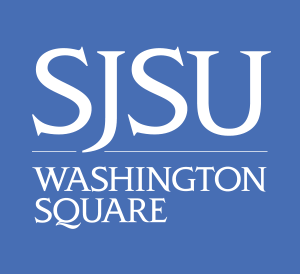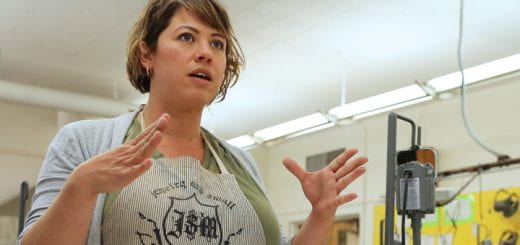Rethinking How We Serve Students
As we continue to look ahead and plan on what it will take to rebound from the inequities the global pandemic has laid bare, I have been thinking about the future as much as the present.
I do not see us going back to where we were. The changes have been too dramatic, too sudden and too sweeping. Working in this new environment—primarily a digital one—has forced us to rethink the way we serve our diverse student population and equip students to be leaders and global citizens.
I see a number of changes on the horizon as we imagine the future of San José State:
The health, safety and well-being of our students, faculty and staff will continue to drive our decisions even more than in the past.
While the COVID-19 crisis has been devastating, the one and only silver lining is that we are now more laser-focused on the health and well-being of our campus community. We are also better prepared to address the fundamental inequities in our society, as evidenced by our commitment to address systemic racism and injustice across our institution.
In the immediate context, SJSU will develop and maintain programs that meet the health and safety guidelines put forth by our county and state officials. For students, this may mean congregating from a safe distance as a matter of routine. For employees, this may mean developing solutions to support our staff members, some of whom may still need to work remotely for some time, as we ease our way back to a repopulation of campus. Over the near and longer term, we are launching a year-long examination of systemic racism on campus, with the goal of bringing about true transformative change and improving our campus climate for all.
We must address the digital divide impacting many of our students, staff and faculty members, and the communities in which they live.
The pandemic has revealed the disparate availability of reliable broadband, WiFi and computer access, especially in underserved urban and rural communities. We will work with local city, county, state and federal officials to address this digital divide and support the creation of a county-wide broadband access initiative so that all stakeholders can benefit from an SJSU education and function in a 21st century digital environment. SJSU leaders and faculty members are working with leadership at the state and county levels to define the policy issues to create maps of broadband coverage and develop solutions.
We will create learning communities among our faculty members that help share best practices in online education.
We are investing in the training of faculty members so they can deliver high-quality programs, not only in the short term but over the long haul.
For instance, the SJSU Teach Online Summer Certificate Program, supported by a partnership featuring the SJSU Center for Faculty Development, eCampus, the Office of Diversity, Equity and Inclusion (ODEI) and the outside organization Online Learning Consortium (OLC), is an innovative way our campus is supporting faculty members in inclusive, accessible and well-designed online and hybrid instruction. Over a thousand faculty members signed up for this summer workshop, which entailed much more than the Zoom transition our students and faculty members experienced in the spring; it is a very thoughtful, well-planned approach for our future.
The future of SJSU will include a great deal of thinking around life outside of the classroom and even beyond the physical boundaries of campus. There are so many ways that our students can and do connect to their communities, such as CommUniverCity, the Center for Community Learning and Leadership, Beyond Football and many other programs and initiatives. Our staff members in Student Affairs and across the university will continue to develop innovative ways for them to engage, experience the richness of college life and thrive in downtown San José and other communities.
Our students, faculty and staff will continue to find new, inventive ways to come together, though physical distancing will continue.
Over the course of sheltering in place, I have observed different ways of making social connections, despite the physical distancing we all continue to practice. We all have become aware, for example, of “Zoom parties” that are more social in nature, where people gather virtually to enjoy one another’s company, relax and socialize. Facilitating these sorts of trends and social connections has been a positive for SJSU and something that I see continuing into the future.
Faculty members and students, in collaboration with staff members, will develop creative approaches to difficult classroom and learning problems.
It has been gratifying for me to learn that the creativity made necessary by this crisis is pushing through new conversations about teaching and learning more generally. In our robotics lab, for instance, our budding engineers learned to connect with their lab equipment and thus manipulate those machines virtually—a skill and approach they may not have needed to learn just weeks before the shelter-in-place order was enacted. I expect that SJSU’s resourceful faculty, staff and students will continue to astound and teach us in these ways, as they challenge the more historical notion that teaching and learning is an individual act of a singular faculty-student relationship.
Hybrid and online courses will become more common as technology continues to play a meaningful role in higher education.
It is highly unlikely that we will be able to hold classes that fill to capacity this fall, and perhaps for some time beyond that. This is leading to a re-imagination of the traditional “large lecture,” effective and diverse approaches to student learning and an evaluation of our physical teaching spaces. We also are examining our “hands-on” courses—research labs, art studios, performance courses—in order to create ways to meet student learning outcomes safely.
The agility of SJSU’s IT team already has allowed us to be responsive to shelter-in-place requirements spurred by the current pandemic and to move to a completely online environment quickly and efficiently. In the process, they identified technological integrations and efficiencies that can help us deliver our core mission better. The current crisis has shone light on the importance of continuing to invest in such tools and catalyzed some improvements that may not have surfaced for another several years.
Virtual student support services can allow for more convenient access and connection to live and recorded programs and services.
Our annual Admitted Spartan Day—an event that traditionally brings upwards of 10,000 people onto campus—was moved to a virtual experience. This was also true of our orientation programs, our campus tours and other “open house” events. The staff quickly pivoted to this new approach and did an absolutely remarkable job. One of the highlights was a “Spartan spirit” community video that held center stage in our virtual spring commencement. This video featured congratulatory remarks from a number of regional leaders, celebrities, elected officials, proud alumni and others.
The result was a great Admitted Spartan Day virtual experience for our new students and their families that included a full day of videos on academic and student life on campus; an insider’s look at Diaz Compean Student Union, Dr. Martin Luther King, Jr., Library, the Spartan Recreation and Aquatic Center; and even downtown San José features such as the Hammer Theatre Center. We also now have a suite of webinars on student finances and campus work opportunities, as well as informative e-presentations on student housing and other important aspects of the student experience.
Staff and faculty members are using what they learned with these open house events to create even more engaging and innovative virtual orientation experiences for our 7,700 new first-year and transfer students.
These positive developments beg two important longer-term questions. First, do we really want to go back to exactly how things were in the past? Second, and perhaps more fundamentally, do we really have a choice but to embrace change?
Commencement ceremonies and other signature events and activities, such as our arts performances, will come back stronger than ever at some point. But are there some practices we might decide to adopt in the future, practices that have emerged during this crisis that are having beneficial impacts on our overall health and climate? And are there other innovative methods we may still develop in the weeks ahead, techniques that will continue to stretch the imaginations and creativity of our students, faculty and staff even more?
All of this suggests that San José State will have to be more flexible in the delivery of its academic and support service programs in the future. It will be up to us, as educators, to remain open to those changes that might offer positive consequences and enable us to address underlying, systemic inequities, while at the same time protecting those practices and strategies that define our essence, purpose and values. We have to more thoughtfully engage students “where they are” and not ask all of them to “meet us where we want to be.”
As we continue to move through this crisis, I would encourage all of us to think about how it has changed us. Change has been a constant at SJSU, and I remain grateful to those members of the campus community who have shown such a willingness to embrace change. Though it has been uncomfortable at times, our adaptability and resilience clearly have prepared us for the current crisis in ways that would have been more difficult years ago.
Though we do not know exactly what the future holds or what it will look like, we must continue to place the needs of our students, faculty and staff members at the forefront. We must embrace change when it serves us well to do so, with resilience and forward-thinking approaches.





Thank you for this thoughtful and detailed response. May all go well in this academic year.
This is very uplifting, and personally rewarding for me. When I retired in 1998, I sought out ways to avoid thumb-twiddling and started visiting web sites on subjects of interest to me. The result was being invited to adapt the classes in Astrology I’d been teaching in community colleges around the time I received my “Special Major – New College” BA at SJSU to an on-line format. For ten years I taught students all over the world from the comfort of my living room, and it is most encouraging to see this kind of thing re-shaping my alma mater.
Don LeCouteur, BA, MA